Steemit Learning Challenge-S27W1: Physiofit — Pain-free Challenge"
If you tell me you haven't experienced pain before, you must be lying. Why? People, it's a part of us and serves as an alarm to our body, telling us something is wrong and that we must do something.
Try hitting your leg against a hard surface if you do not feel pain. We have good pain and bad pain, and it's quite amusing to know that in all this pain, we sometimes gain something, learn something and do something. There are certain pains that the drug doesn't react to. So in cases like this, we need an extra. We'll be doing more on physical pain and how Physiofit comes into play. In this challenge, I carefully carried out all that was asked to be done as tasks.
Task 1 |
|---|
PAIN
Pain? My knowledge of pain is vast because I experience pain almost on a daily basis. So if I'm to explain what pain is, I'll be detailed about it. Pain has a lot of definitions resulting from a certain action or reaction. For every action, there must be a reaction. This is how I'll start my definition of pain.
Come to think of it. Have you fallen to the ground before or hit your body against a hard surface? How did you feel? A hurtful feeling and uneasiness, right? At some point you'll be annoyed with yourself. When we were young, we'd scream in tears, resulting from the hurtful feeling from the action.
So pain is a feeling resulting from an action we took, giving us a different reaction in facial expression. Anyone feeling pain from a hit will frown. The facial expression will definitely change from that joyful mood to a sad, painful and angered mood.
This pain or hurtful feeling can be internal or external; that's why we have different categories of pain, ranging from physical, psychological, emotional and spiritual. Pain too isn't just a feeling. It's our body's way of reacting to certain things that hurt us. Imagine we can't feel pain; we'll put a knife across our skin without feeling hurt.
We'll jump into a pack of nails without understanding that those are damn sharp and can be painful. We'll just see the outcome, but we can't feel it. So pain is our response to hurtful situations we face that happen to us.
TYPES OF PAIN
We have various types of pain, different from the categories I stated earlier. These types of pain have different actions and reactions, as not all pain have the same results. There is some pain that will stay with you for months, even years. There is some pain that ends in minutes or hours. These include
- Acute Pain: This acute pain is pain that's short-term. It comes quickly and visibly. It doesn't last long. This is seen in cases where you cut your finger with a knife or you touch a hot pot. That immediate response to that action that causes pain is what we call 'acute'. This is the kind of pain that can cause you to scream, shout or become angry all of a sudden. It usually fades once the area of pain is taken care of. This kind of pain doesn't hurt for a day until you strike the pain surface.
- Chronic Pain: This type of pain doesn't come suddenly. It comes gradually and stays for months or even years. It's one that's long-lasting. You can't experience back pain all of a sudden. It comes gradually when you've done an action and refuse to do something about it. Let's say you carry 2 bags of garri on your head and trek a distance. You'll eventually feel the pain at some point. Not just back pains. Any injury that may have healed, but the pain still sticks around. This kind of pain drains one's energy, causes mood swings and affects one's sleep and daily activities. Another example is migraine.
- Nociceptive pain is a pain resulting from damage to the body's tissues, much more of an internal pain. It could be tissues in the bone, organs, muscles and skin. For example, one jumps from a height and breaks his leg, or maybe one is knocked down by a car. In most cases, you won't see the injury physically, but you'll feel pain.
- Neuropathic Pain is pain resulting from damaged nerves. When these nerves of the body are touched or sensitive to painful situations resulting from our actions, we experience pain. Have you at some point felt a stiffness in your legs that makes it difficult to move after pressing your leg against another or sitting for a long time? Your nerves acted. An example is the diabetic nerve pain. Most people feel this burning or shooting pain that comes from within.
PATHOLOGY
The reddish colour isn't visible because of our skin colour. After a few days, the reddish colour changes to blue, which shows the collection of blood around that region. In Black people, it's not visible, but you'll notice changes in the inflamed areas. This inflammation occurs when the body tissue is damaged. The inflammation causes pain and signals you to do something, as water may enter the area. You notice a decrease in the inflamed area when the tissue and the pain cease.
Once this inflammation begins, there's what we call activation of the nerves. This stimulates pain sensors called nociceptors to send signals through the nerves to the spinal cord. The spinal cord then sends a message to the brain for interpretation of the action and emotions to be expressed, telling the body how to react to such pain.
It does its work by sending the interpretation of these signals to the body to be felt constantly, except there's a relief in terms of drugs. This kind of pain affects the body and the mind because when one is stressed or anxious, it bubbles up, affecting one's mood. This kind of pain doesn't protect you.
Task 2 |
|---|
You have to find a patient with the symptom and share a history of injury or illness. You can also share your history too if you suffer from any injury recently or previously that hasn't been treated yet.
To carry out this task successfully, I invited a student for an interview. I had to sit him down to discuss a few things with him. I took down his name, which is very essential in examining a patient with a symptom.
Abasiodiong is his name and he happens to be playing football with his peers every evening. From his explanation, he stated that he sustained a serious injury to his ankle, which caused him to place a bandage around it. He also applied some ointment on the affected area, but it seems not to go quickly. He still feels pain in that region, restraining his fast movement from one place to another. I then asked him how long he has been feeling this random pain or for how long he sustained the injury. He stated two pains from different regions.
| Pain around his neck region | Pain on his ankle |
|---|---|
| 1½ months | 2 months |
| He feels this kind of pain when he wakes up in the morning | Sustained from an injury during a football match. |
These are the details he gave me concerning his symptoms and injury. He stated clearly that he has been on pain relief drugs for weeks but no improvement. He didn't know the cause of his early morning neck pain either. I gave him a few suggestions and made an improvised hot pack to soften his ankle pain.
I told him to change his sleeping posture, as this may be one of the reasons he feels neck pain every morning. I've also experienced such, and changing my posture helped a lot. I then used a towel soaked in hot water to place on his sprained ankle. This gave him a bit of relief before moving into the physiofit exercises stated in the lesson.
Personally, I've suffered from an injury which causes chronic and nociceptive pain. There's this festival of masquerade held in my street. I wasn't aware that a group of masquerade was parading in my area. On the verge of purchasing something from a nearby shop, I bumped into them. With that fear in me, I took to my heels and ran to a nearby house, but I knocked my knee so hard that I began limping.
It was so furious because this may be a lifetime problem if not tackled well. It hasn't been treated yet because it still hurts. I do stretches and a few leg rotations to keep the knee straight before visiting a bone doctor who will handle it professionally to avoid complications in the future.
Task 3 |
|---|
It would be better if you treat the patient pain by performing or apply the above exercises or tips, share videos or pictures while performing and then review after getting treatment.
The patient mentioned earlier who stated two types of pain from his neck and ankle regions. So I decided to tackle these two pains since he had tried all pain relief with no relief. I started with that of his angle. I applied what was said in the tutorial on how to give a soft remedy to someone who has acute and chronic pain.
From his statement of the problem, he has chronic pain because the inflammation and injury on the sprained knee are gone, but the pain remains. So I told him to boil water in his home and bring a soft towel as my improvised hot pack. I dipped the towel in the basin of hot water and placed it on his sprained ankle. He was startled at first but got used to the heat. I then helped him with some neck rotations as stated in the tutorial.
He did this rotation for 20 seconds, left, right and with a towel He felt a bit of pain during the process but a relief after the process. I made sure I stood with him during and after the process.
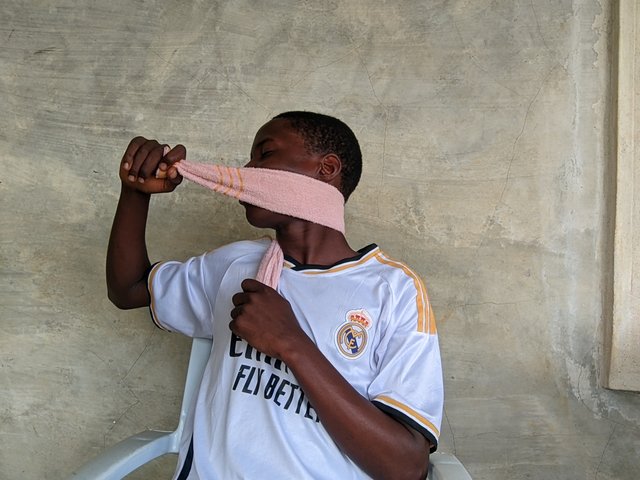 |  |
|---|
For his ankle, we did a few stretches. The calf-stretch exercise was painful to him. He didn't want to do that. I told him to rather place his leg on a chair and try to bend the ankle by bending forward so his legs can stretch backwards. He did this for 30 seconds with the leg that hurt. The video explains his overall experience during and after the exercise. He said he felt some relief, which wasn't the case before he did the stretches and others. I recommended consistency in the exercise for 1 week and checking back here for further recommendations.
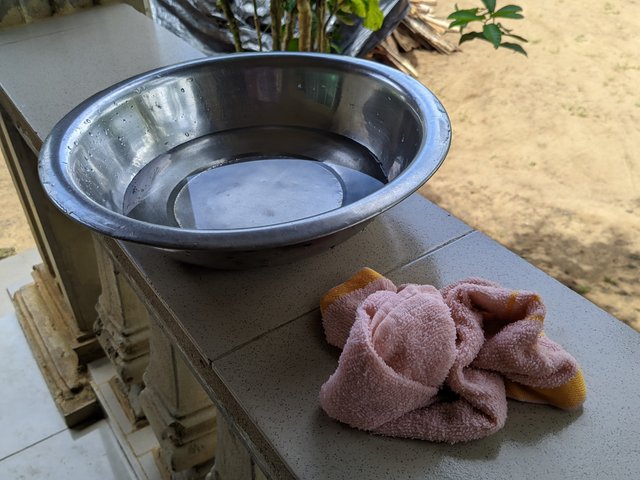 | 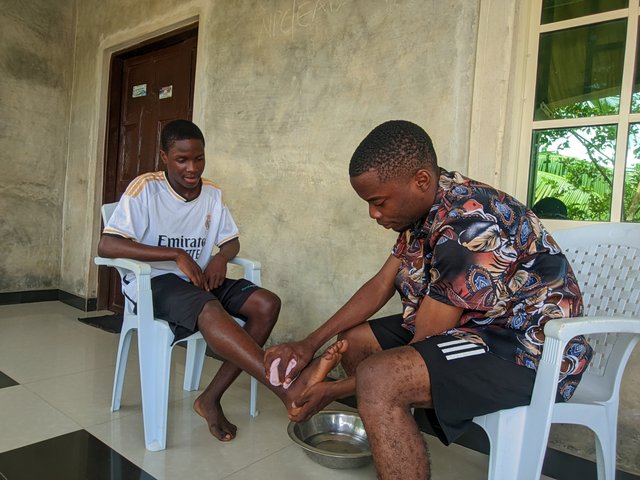 |
|---|---|
| My patient is smiling after the exercise |  |
With this, I was able to complete the task, and guess what? My patient said he didn't think of this as a method of solving his pain issues. He thanked me, and that ended it. As a good Physiofit therapist, I took records of all his symptoms, his name and other details.
I invite @shahidalinaz, @destinydreamer and @deetalka6
Cc,
@ashkhan
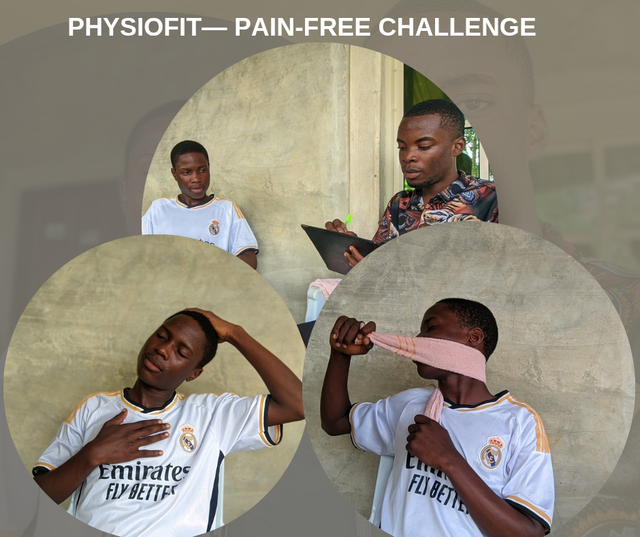
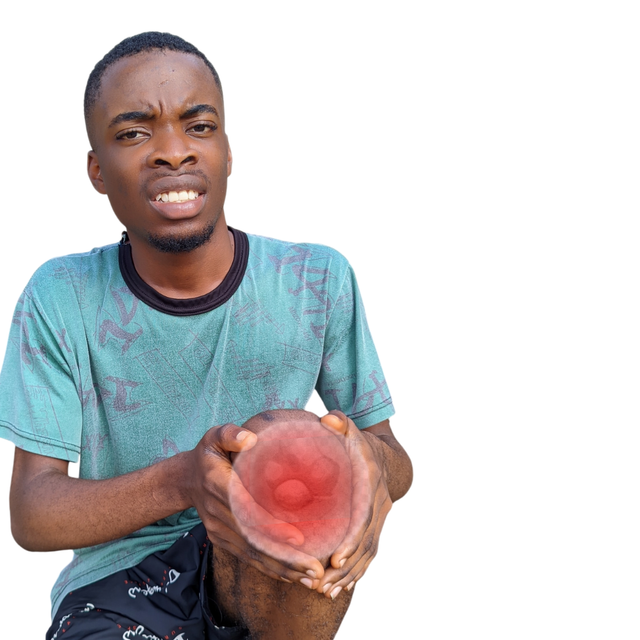
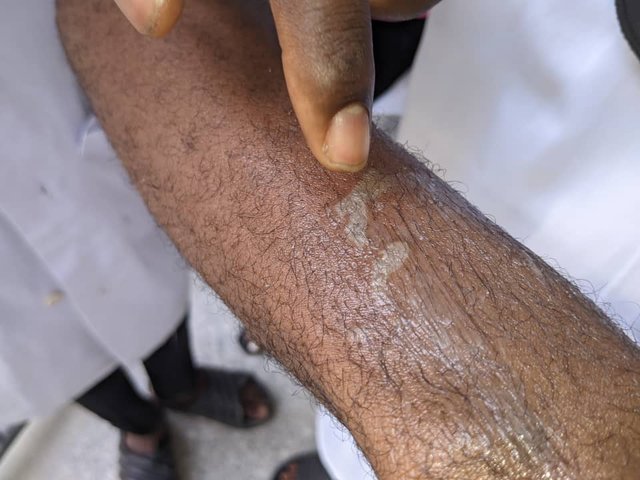
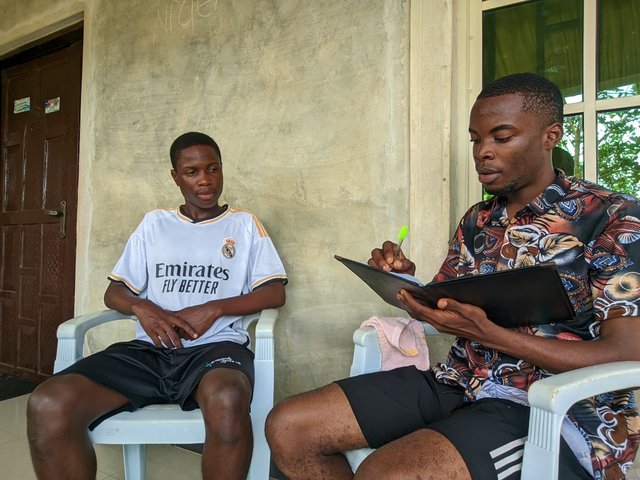
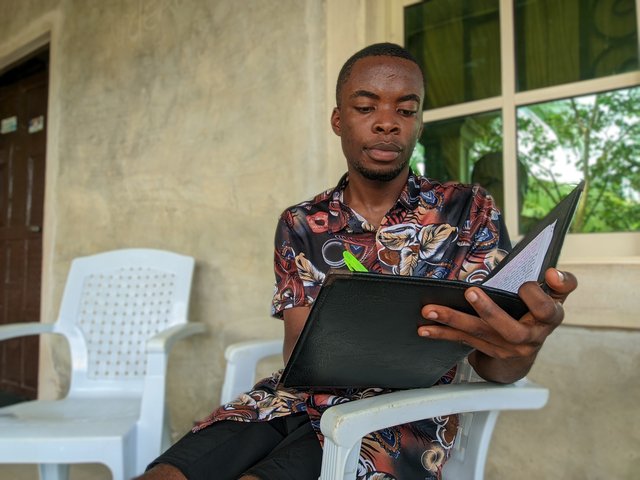

Thank you for understanding the challenge and sharing your assignment; I hope you will enjoy this week's challenge and try to implement it in your life if you see any such case.
Observations
0.00 SBD,
17.37 STEEM,
17.37 SP
Thanks for been a good physiofit. I embrace your generosity.
I appreciate. 🫂
You're welcome